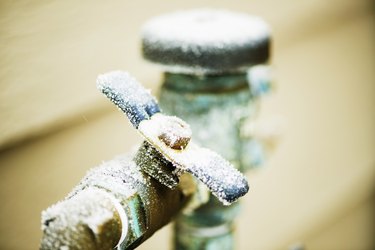Crucial Advice to Prevent Frozen Plumbing in Winter
Crucial Advice to Prevent Frozen Plumbing in Winter
Blog Article
Here in the next paragraphs yow will discover a good deal of first-rate content about Prevent Frozen Pipes .

Winter can damage your plumbing, especially by freezing pipelines. Below's how to avoid it from occurring and what to do if it does.
Intro
As temperatures drop, the danger of icy pipes increases, potentially resulting in costly repairs and water damages. Understanding exactly how to avoid icy pipelines is essential for house owners in cool climates.
Avoidance Tips
Shielding prone pipes
Wrap pipelines in insulation sleeves or utilize warm tape to shield them from freezing temperatures. Focus on pipelines in unheated or outside locations of the home.
Heating methods
Maintain indoor spaces properly heated up, particularly locations with pipes. Open up cupboard doors to allow cozy air to flow around pipes under sinks.
Exactly how to identify icy pipelines
Look for decreased water flow from taps, uncommon smells or sounds from pipes, and noticeable frost on subjected pipes.
Long-Term Solutions
Structural modifications
Consider rerouting pipelines far from exterior wall surfaces or unheated locations. Include added insulation to attics, basements, and crawl spaces.
Upgrading insulation
Invest in high-grade insulation for pipelines, attics, and wall surfaces. Proper insulation assists preserve regular temperatures and reduces the risk of frozen pipelines.
Safeguarding Outdoor Plumbing
Garden tubes and exterior taps
Disconnect and drain pipes yard pipes prior to wintertime. Set up frost-proof faucets or cover outside taps with shielded caps.
Recognizing Icy Pipes
What triggers pipelines to freeze?
Pipelines freeze when revealed to temperature levels listed below 32 ° F (0 ° C) for prolonged durations. As water inside the pipelines ices up, it broadens, putting pressure on the pipeline wall surfaces and potentially creating them to burst.
Dangers and damages
Icy pipes can lead to water system interruptions, residential or commercial property damages, and costly repair services. Ruptured pipes can flooding homes and cause comprehensive architectural damages.
Indicators of Frozen Piping
Identifying frozen pipes early can stop them from rupturing.
What to Do If Your Pipelines Freeze
Immediate activities to take
If you believe frozen pipes, maintain taps available to eliminate stress as the ice thaws. Use a hairdryer or towels taken in warm water to thaw pipes gradually.
Verdict
Stopping frozen pipelines calls for proactive actions and fast responses. By comprehending the reasons, indications, and preventive measures, homeowners can safeguard their pipes during winter.
5 Ways to Prevent Frozen Pipes
Drain Outdoor Faucets and Disconnect Hoses
First, close the shut-off valve that controls the flow of water in the pipe to your outdoor faucet. Then, head outside to disconnect and drain your hose and open the outdoor faucet to allow the water to completely drain out of the line. Turn off the faucet when done. Finally, head back to the shut-off valve and drain the remaining water inside the pipe into a bucket or container. Additionally, if you have a home irrigation system, you should consider hiring an expert to clear the system of water each year.
Insulate Pipes
One of the best and most cost-effective methods for preventing frozen water pipes is to wrap your pipes with insulation. This is especially important for areas in your home that aren’t exposed to heat, such as an attic. We suggest using foam sleeves, which can typically be found at your local hardware store.
Keep Heat Running at 65
Your pipes are located inside your walls, and the temperature there is much colder than the rest of the house. To prevent your pipes from freezing, The Insurance Information Institute suggests that you keep your home heated to at least 65 degrees, even when traveling. You may want to invest in smart devices that can keep an eye on the temperature in your home while you’re away.
Leave Water Dripping
Moving water — even a small trickle — can prevent ice from forming inside your pipes. When freezing temps are imminent, start a drip of water from all faucets that serve exposed pipes. Leaving a few faucets running will also help relieve pressure inside the pipes and help prevent a rupture if the water inside freezes.
Open Cupboard Doors
Warm your kitchen and bathroom pipes by opening cupboards and vanities. You should also leave your interior doors ajar to help warm air circulate evenly throughout your home.

We are very focused on Prevent Frozen Pipes and I hope you enjoyed my page. You should take the opportunity to distribute this blog if you liked it. Many thanks for your time. Return soon.
Free Estimates Report this page